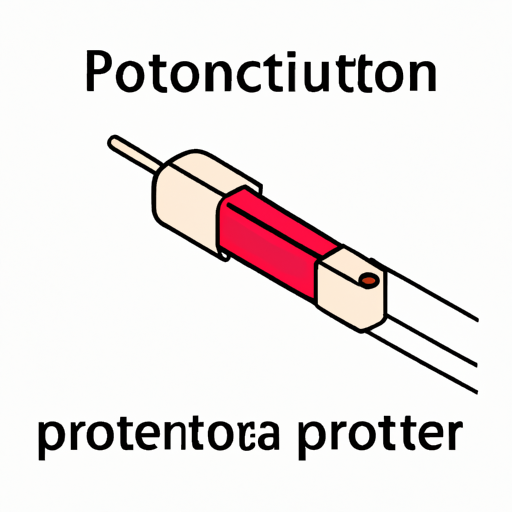

Title: Exploring the Versatility of Digital Potentiometers: A Comprehensive Guide

1. Single-Channel Digital Potentiometers (200 words) Single-channel digital potentiometers are the most basic type available in the market. As the name suggests, they consist of a single potentiometer that can be digitally controlled. These devices are commonly used in applications where a single variable resistance is required, such as audio volume control, gain adjustment, and sensor calibration. We will discuss their key features, including resolution, resistance range, and interface options, along with their advantages and limitations.
2. Multi-Channel Digital Potentiometers (250 words) Multi-channel digital potentiometers offer multiple potentiometers within a single package, allowing for simultaneous control of multiple resistance values. These devices are particularly useful in applications that require independent adjustment of multiple parameters, such as audio mixing consoles, programmable power supplies, and automated test equipment. We will explore the various configurations available, including dual-channel, quad-channel, and octal-channel digital potentiometers, highlighting their advantages and potential applications.
3. Non-Volatile Digital Potentiometers (250 words) Non-volatile digital potentiometers, also known as NV pots, retain their resistance settings even when power is removed. This feature makes them ideal for applications where the resistance value needs to be stored and recalled, such as in audio systems, motor control, and digital-to-analog converter (DAC) calibration. We will discuss the different types of non-volatile digital potentiometers, including electrically erasable programmable read-only memory (EEPROM) and non-volatile random-access memory (NVRAM) based devices, and their benefits in terms of reliability and convenience.
4. Digital Potentiometer Arrays (300 words) Digital potentiometer arrays consist of multiple potentiometers integrated into a single package. These devices offer a compact and cost-effective solution for applications that require multiple resistance values, such as programmable filters, equalizers, and waveform generators. We will explore the different configurations available, including series and parallel arrays, and discuss their advantages, such as reduced board space and simplified circuit design.
5. Digital Rheostats (200 words) Digital rheostats, also known as digital variable resistors, are a specialized type of digital potentiometer that provides a variable resistance in a single terminal configuration. These devices are commonly used in applications that require precise current control, such as LED dimming, motor speed control, and temperature regulation. We will discuss their unique features, including current handling capabilities, temperature coefficient, and interface options, along with their advantages and limitations.
Conclusion (100 words) Digital potentiometers offer a wide range of product types, each catering to specific application requirements. From single-channel to multi-channel, non-volatile to arrays, and digital rheostats, these versatile components provide engineers with flexible solutions for resistance adjustment. By understanding the different product types available, their features, advantages, and applications, engineers can make informed decisions when selecting digital potentiometers for their projects. As technology continues to advance, digital potentiometers are expected to play an increasingly vital role in various industries, enabling precise and efficient control of resistance values.
Title: Exploring the Versatility of Digital Potentiometers: A Comprehensive Guide

1. Single-Channel Digital Potentiometers (200 words) Single-channel digital potentiometers are the most basic type available in the market. As the name suggests, they consist of a single potentiometer that can be digitally controlled. These devices are commonly used in applications where a single variable resistance is required, such as audio volume control, gain adjustment, and sensor calibration. We will discuss their key features, including resolution, resistance range, and interface options, along with their advantages and limitations.
2. Multi-Channel Digital Potentiometers (250 words) Multi-channel digital potentiometers offer multiple potentiometers within a single package, allowing for simultaneous control of multiple resistance values. These devices are particularly useful in applications that require independent adjustment of multiple parameters, such as audio mixing consoles, programmable power supplies, and automated test equipment. We will explore the various configurations available, including dual-channel, quad-channel, and octal-channel digital potentiometers, highlighting their advantages and potential applications.
3. Non-Volatile Digital Potentiometers (250 words) Non-volatile digital potentiometers, also known as NV pots, retain their resistance settings even when power is removed. This feature makes them ideal for applications where the resistance value needs to be stored and recalled, such as in audio systems, motor control, and digital-to-analog converter (DAC) calibration. We will discuss the different types of non-volatile digital potentiometers, including electrically erasable programmable read-only memory (EEPROM) and non-volatile random-access memory (NVRAM) based devices, and their benefits in terms of reliability and convenience.
4. Digital Potentiometer Arrays (300 words) Digital potentiometer arrays consist of multiple potentiometers integrated into a single package. These devices offer a compact and cost-effective solution for applications that require multiple resistance values, such as programmable filters, equalizers, and waveform generators. We will explore the different configurations available, including series and parallel arrays, and discuss their advantages, such as reduced board space and simplified circuit design.
5. Digital Rheostats (200 words) Digital rheostats, also known as digital variable resistors, are a specialized type of digital potentiometer that provides a variable resistance in a single terminal configuration. These devices are commonly used in applications that require precise current control, such as LED dimming, motor speed control, and temperature regulation. We will discuss their unique features, including current handling capabilities, temperature coefficient, and interface options, along with their advantages and limitations.
Conclusion (100 words) Digital potentiometers offer a wide range of product types, each catering to specific application requirements. From single-channel to multi-channel, non-volatile to arrays, and digital rheostats, these versatile components provide engineers with flexible solutions for resistance adjustment. By understanding the different product types available, their features, advantages, and applications, engineers can make informed decisions when selecting digital potentiometers for their projects. As technology continues to advance, digital potentiometers are expected to play an increasingly vital role in various industries, enabling precise and efficient control of resistance values.